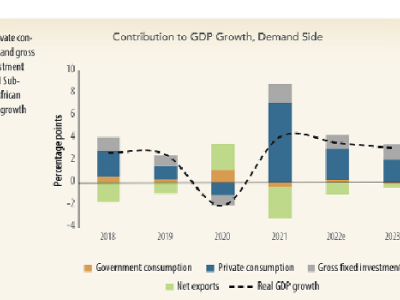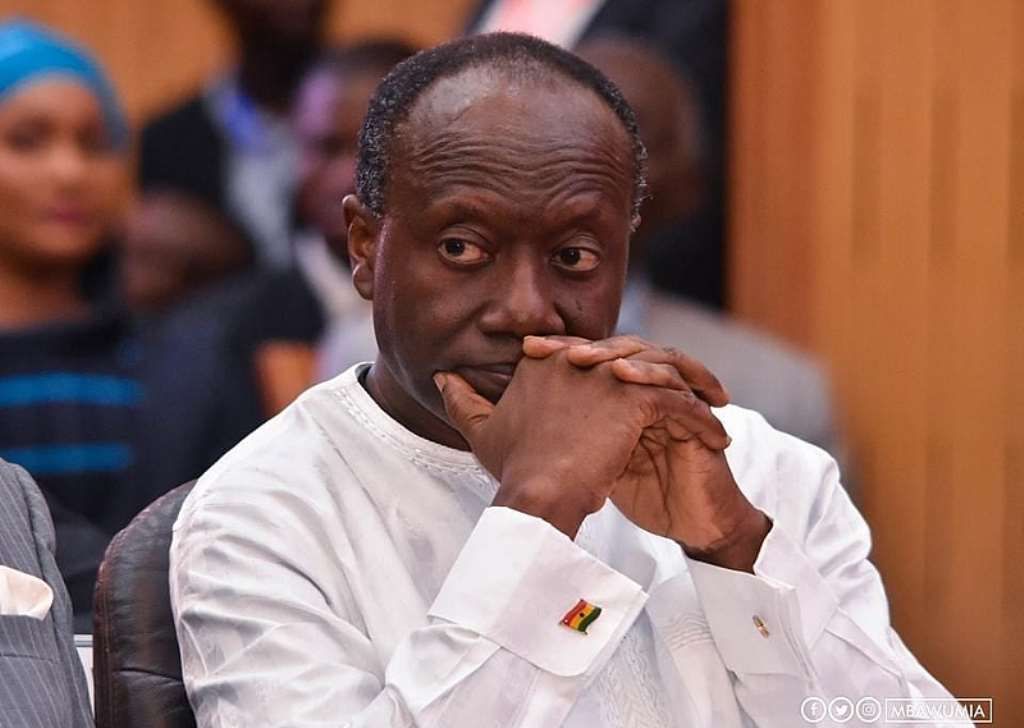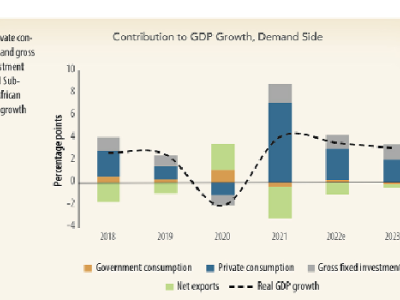Second slowdown in the economy expected; revenues and employment on the line; economist asks for revision of goals


After failing to expand as predicted in 2022, the economy is anticipated to slow down this year as well.
Growth declined to 3.1% last year, falling short of the aim of 3.7%, and is now predicted to fall much lower this year, to less than 2%.
The government’s goal of 2.8% growth, according to experts, is now unattainable because of financial shortages and debt pressures that limit how quickly the economy can grow.
The International Monetary Fund (IMF) has stated that it expects the economy to grow at 1.6% this year, which will have a terrible impact on jobs and tax receipts for the government.

Revision
Eugene Bawelle, an economist and lecturer at Academic City University, predicted that after falling short of the 2022 target, the government will have to cut its 2.8% GDP target for 2023.
According to Mr. Bawelle, the 2023 budget is also out of sync because the IMF’s protracted negotiations have prevented the majority of tax measures and external funding sources from being operational.
The economist predicted that as a result, the government will probably fall short of its 2.8% growth goal for 2023, necessitating a review of the revenue and expenditure predictions in order to take this change into account.
GDP numbers
The most recent data from the Ghana Statistical Service (GSS) showed that the country’s economy expanded by 3.1% in 2022, slightly less than the government’s aim of 3.7%. This is why Mr. Bawelle’s advise is timely.
Additionally, it falls short of projections made by the World Bank, African Development Bank, and International Monetary Fund, which all predicted GDP growth of 3.6%, 3.5%, and 3.6% for the time period under consideration.
In comparison to 2021, the non-oil GDP expanded by 3.8% in 2022, while the non-gold GDP increased by 2.1% in 2022 compared to 7.1% in 2021. economy
Mr Bawelle in an interview with the paper said it was not surprising that Ghana’s GDP growth recorded figures lower than government’s projection for the year. He said that was because since June 2022 when the government announced its decision to seek a bailout support from the IMF, many business activities which relied on either multilateral or bilateral financing or some arrangements outside government’s financing had abruptly halted, heightening uncertainties in the economy. “You can talk about the Kumasi inner city roads, Eastern corridor, the Kejetia market phase 2, the construction of some interchanges across the country and many similar activities in other sectors of the economy,” he stated.
Services sector dominate
The figures from the GSS also indicated that the services sector continued to dominate GDP growth, contributing 44.9 per cent of the value of the economy in 2022.
This was followed by the industry sector with 34.2 per cent and the agriculture sector with 20.9 per cent.
General Secretary of the Ghana Agriculture Workers Union (GAWU), Edward Kareweh, described as sad, why a sector that used to be the major driver of economic growth, emerged as the lowest contributor in the last decades.
He, therefore, called for a total overhaul of the sector in a bid to increase its contribution to economic growth.

He claimed that although it was common for one sector to take a back seat to another, Ghana’s situation required special attention because the other sectors’ growth was not being driven by production.
He observed that while the agricultural sector’s contribution has decreased over time, one could have anticipated that the manufacturing subsector, which was production-based, would have been the main driver of industrial sector growth.
Unfortunately, there has not been much growth in the manufacturing subsector in recent years; in fact, according to the GDP estimates for 2022, the sector actually shrank by 2.5%.
Agriculture used to be the main driver of the nation’s GDP, but it is currently the sector with the lowest GDP. Although it is common for the agriculture sector to take a back seat to other industries, the situation must be considered in its overall perspective.
The manufacturing sector is not expanding as it ought to in our situation. Instead of production, imports are what are driving the growth of the services sector. Production is not something we are particularly focused on, he said.
The COVID-19 epidemic and the Russia/Ukraine conflict, according to Mr. Kareweh, were the two significant global events that all pointed to the fact that the agriculture sector needed a makeover in order to play a prominent position in the economy.
“In order for us to become more resilient, we need to alter farm production. We need to reengineer the sector to make it more impactful if we still think it is the foundation of the economy.
According to him, the sector “has the potential to create more decent jobs and address the unemployment issue in the nation.”
Sectoral expansions
In the year under review, the services sector expanded by 5.5%, with the information and communication subsector posting the greatest year-over-year GDP growth rate at 19.7%.
Following this were financial and insurance activities (5.7%), transport and storage (4.7%), trade, car repair, and home goods (1.3%), health and social work (9.2%), public administration, defense, and social security (6.1%), financial and insurance activities (10.2%), and health and social work (10.2%).
Hotels and restaurants (-1%), other personal service activities (-1.3%), real estate (-7.6%), and professional, admin, and support services (-10.9%) are a few of the subsectors that saw contraction.
In the year under review, the industry sector also increased by 0.9%, with the mining and quarrying subsector posting the greatest year-over-year annual GDP growth rate of 8.1%.
In 2022, every other subsector had a decline. Construction decreased by 4%, the manufacturing subsector by 2.5%, the electricity subsector by 3.3%, the water and sewerage subsector by 4.9%, and the electricity subsector by another 4.5%.
On the other hand, the agriculture sector expanded by 4.2% in 2022, with the fishing subsector posting the greatest annual growth rate of 8.8%.
The livestock sub-sector was in second place, followed by agriculture (3.8%), forestry and logging (1.7%), and cattle (5.5%).







